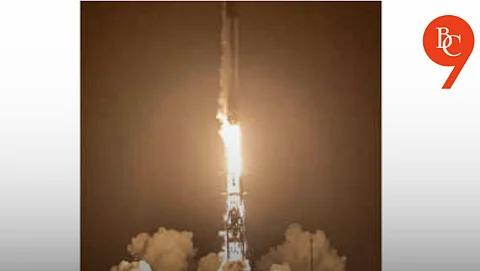

Starship 36 exploded in a massive fireball just moments before its scheduled launch, sending shockwaves through the aerospace community and reigniting debate over the risks and rewards of rapid rocket development.
Eyewitnesses at SpaceX’s Starbase facility in South Texas reported a deafening blast and a towering plume of flame as Starship 36, the company’s latest prototype, suffered a catastrophic failure during final preparations. The explosion occurred before the engines could ignite for liftoff, marking a dramatic end to what was expected to be a routine test in SpaceX’s relentless pursuit of reusable, next-generation spaceflight.
While the exact cause of the explosion remains under investigation, early indications suggest a possible issue with the vehicle’s propellant systems or a malfunction during the static fire test—a procedure in which engines are briefly ignited while the rocket remains anchored to the launch pad. SpaceX engineers are now combing through data to pinpoint the failure’s root cause, a process that has become all too familiar for the Starship program.
This incident comes on the heels of several recent Starship failures. Earlier this year, upper-stage explosions marred both the seventh and eighth test flights, scattering debris across the Caribbean and forcing the Federal Aviation Administration (FAA) to temporarily ground the program pending safety reviews. Each mishap has triggered rigorous investigations, with the FAA requiring SpaceX to identify causes and implement corrective measures before resuming launches.
The Starship program is central to SpaceX’s vision for deep space exploration, including missions to the Moon and Mars. The fully reusable Starship-Super Heavy system is designed to carry massive payloads and, eventually, human crews beyond Earth’s orbit. However, the string of high-profile failures—including today’s explosion of Ship 36—underscores the technical challenges of developing such a revolutionary vehicle.
Despite setbacks, SpaceX has made notable progress. The company achieved successful booster recoveries in recent flights, demonstrating advances in reusability and rapid turnaround. However, the upper stage—the Starship itself—continues to experience reliability issues, particularly during high-stress phases like engine relights and re-entry maneuvers.
The FAA is expected to launch a full investigation, as it has after previous Starship incidents. Airspace restrictions and debris response protocols are likely to be implemented to ensure public safety, especially given the widespread fallout from earlier mishaps. While no injuries have been reported, the incident will delay upcoming launches and may prompt additional scrutiny of SpaceX’s testing procedures.
